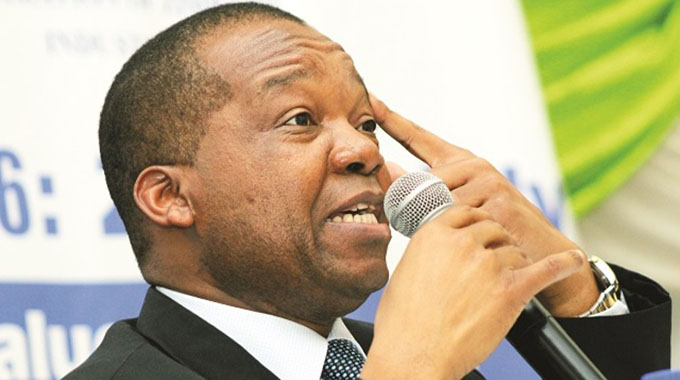$9bn gold coins sold as individuals join rush

Business Reporters
THE Reserve Bank of Zimbabwe (RBZ) says gold coins worth $9 billion have been sold since July this year, with individuals taking a significant chunk of the bullion, while the Monetary Policy Committee (MPC) has kept the bank policy rate unchanged.
The Mosi-oa-Tunya Gold Coins are among a coterie of interventions introduced by authorities to stabilise the economy, including a sharp increase in the bank policy rate from 80 to 200 percent.
The bank policy rate is used by banks to benchmark minimum lending rates.
The coins complemented similar measures by Treasury, which in July demanded a review of all Government supply contracts priced using parallel market exchange rates, which contributed to the creation of excess liquidity that ended up driving exchange rate volatility on the black market.
Inflation and the exchange rate have largely been stable since the Government escalated interventions to squeeze excess liquidity from the market, with the local currency appreciating against the US dollar on the black market while inflation has started falling.
RBZ Governor, Dr John Mangudya, who chairs the MPC, said in a statement yesterday that the committee noted with satisfaction the improved market confidence and uptake of gold coins as an alternative investment instrument to the US dollar.
The central bank introduced gold coins on July 25 as part of several policy measures to stabilise the Zimbabwe dollar exchange rate and tame resurgent inflation.
A total of 9 516 gold coins valued at $9 billion had been sold as at September 23, 2022, with 35 percent having been sold to individuals and 65 percent to corporates, Dr Mangudya said.
Currently, the central bank has been supplying the market with one-ounce coins, which hit the market at US$1 884.80 or $936 589.89 (Zimbabwe dollars), which saw fewer ordinary people participating because of the elevated price.
The RBZ recently promised to introduce lower denomination gold coins to enable the participation of ordinary citizens.
In his 2022 Mid-Term Monetary Policy statement released in July, Dr Mangudya said the bank would release the smaller gold coins in mid-November this year.
“The MPC expects that a combination of current tight monetary policy, continued use of gold coins, foreign exchange auction system, the insistence of value for money by Government in its procurement processes and practices, close monitoring of the possible occurrence of wage-push inflation and effective monitoring and enforcement by the Financial Intelligence Unit will sustainably anchor
exchange rate expectations, thus limiting the exchange rate pass-through to inflation.”
The MPC resolved to maintain the bank policy and medium-term lending rates at 200 percent and 100 percent, respectively, “until durable stability, measured by a sustained decline in month-on-month inflation to desired levels of less than 5 percent is attained.”
It also resolved to further liberalise the foreign exchange market by increasing the weekly amount companies can purchase from the banks for foreign payments under the willing-buyer willing-seller system from US$20 000 to US$100 000.
The MPC noted that the foreign currency exchange rate premium had significantly declined during the past two months with the official and black market exchange rates nearing convergence.
“The foreign exchange rate premium has significantly declined from an elevated level of 140 percent in May 2022 to current levels of between 5 percent and 15 percent, which is consistent with regional and international norms,” said Dr Mangudya.
“This positive development on the exchange rate front is envisaged to go a long way in eliminating arbitrage opportunities, which were fuelling forward pricing models and hence fomenting adverse inflation and exchange rate expectations”.
The MPC expressed satisfaction with the positive impact of the recent policy measures, which have resulted in a significant fall of month-on-month inflation from 12,4 percent in August 2022 to 3,47 percent in September 2022.
The decline in month-on-month inflation has, in turn, resulted in the decline in annual inflation to 280,4 percent in September 2022 from 285,1 percent in August.
“The MPC is committed to ensuring that the current disinflation trend is sustained, in both the short and long-term, through the maintenance of the tight monetary policy stance which should be buttressed by continuous fiscal prudence and close monitoring of wage-push inflation,” the central bank chief said.
Inflation for the month of September came in lower with the month – on – month figure falling to 3,5 percent from 12,4 percent and the annual rate retreating to 280,4 percent from 285 percent, according to the Zimbabwe Statistics Agency (ZIMSTAT).
In the period under review, food and non-alcoholic beverages inflation rate stood at 1,7 percent in September 2022, shedding 12,5 percentage points on the August 2022 rate of 14,2 percent.
The month-on-month non-food inflation rate stood at 5,2 percent, shedding 5,4 percentage points on the August 2022 rate of 10,6 percent.
Finance and Economic Development Minister Professor Mthuli Ncube said last week he expects inflation to rise in the near term whilst the MPC at its latest meeting said: “As previously advised, it was expected that the month-on-month inflation would progressively decline, while annual inflation was expected to continue rising to reach an annual peak in September 2022 due to the lower base effect in 2021.”
Analysts and economic observers attributed the positive shift in the economic fundamentals to the economic and monetary policies that have been adopted by Treasury and the central bank.
Economist Mr Tinevimbo Shava said: “The country has been on a monetary policy tightening stance and these are the benefits of such interventions, the gold coins, high interest rates and government payment (value for money audits) stance have led us to this point and all should be commended.”
Another economist Dr Prosper Chitambara said: “The review and enhancement by the Government of its procurement processes and practices to ensure value for money have resulted in the stability of the exchange rate and a decline in inflationary pressures, so this is not a surprise.”











Comments